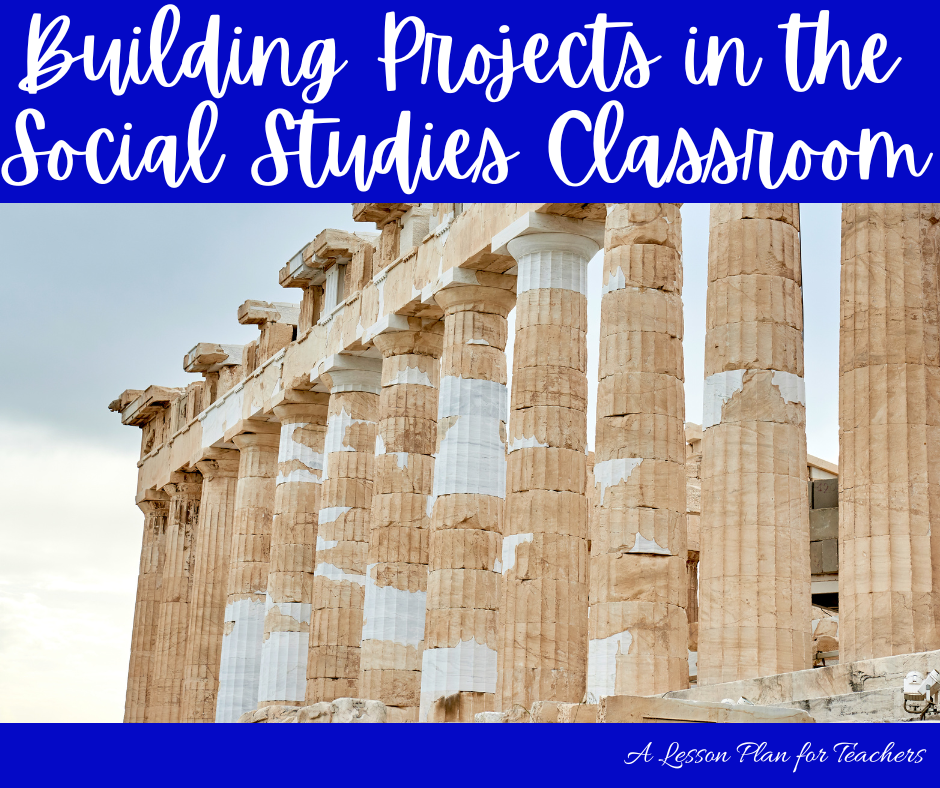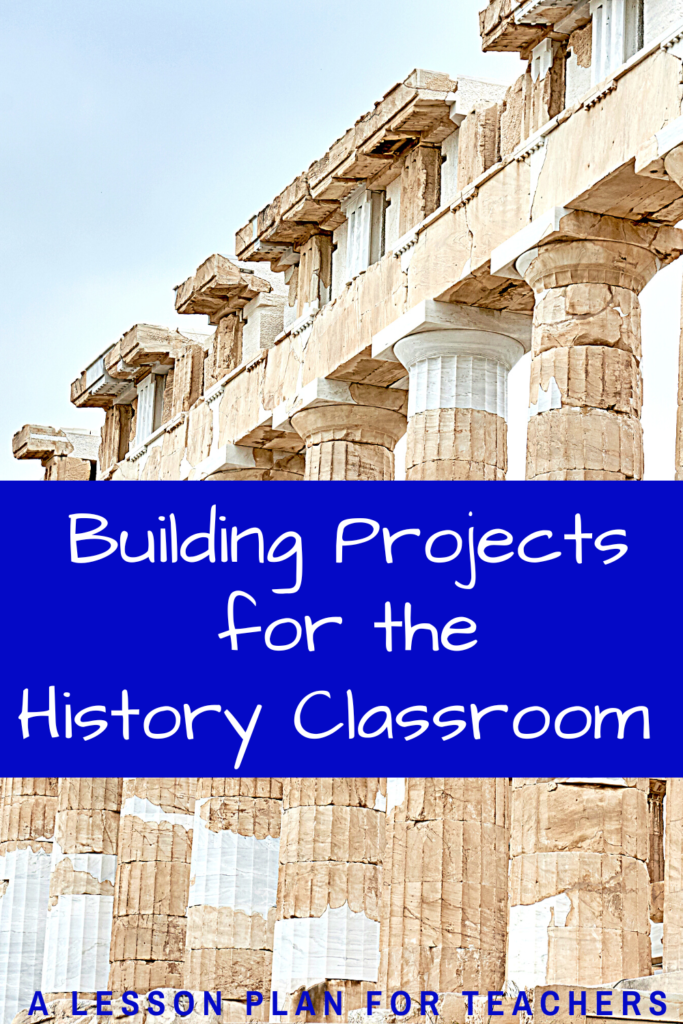Teaching students about ancient civilizations can be boring. But using building projects on ancient architecture can hook them in! It’s also a great interdisciplinary way to introduce them to engineering, design, and art while teaching your History content.

Great Civilization Building Projects
There are so many options for building projects when addressing ancient civilizations (or even modern ones) in your classes. The Ancient Greeks, Romans, and even the Gupta in India are perfect examples. Each originated sound structures, while also creating forms and styles that are still used in modern times. Students will be able to see the past in the present with ease, making the lessons on the past even more relevant.
In my own classes, I allowed as much choice as possible. Some students chose to build the classics (Parthenon, Temples, Arches…), while others opted to go do more research to build full cities or more obsolete structures like the Roman baths or Aqueducts. My AP classes had a great time building Gupta temples with wafer cookies, and eating the cookies! More importantly, they all remembered this lesson and the contributions of the Gupta when they tested! (I could add in research on how using your hands in learning contributes to creating long-term memory, but I’m sure you all remember this lesson from your Ed classes!)
One of the Easiest Building Projects
One of the easiest building tasks is an arch or dome, both common features of ancient Greek and Roman buildings. The building project can even step beyond the Social Studies curriculum if students design a simple experiment as they build a model arch or dome and test its strength.
- Start by introducing your students to the basics of arches and domes in ancient architecture. Show them pictures of famous structures such as the Pantheon or the Arch of Hadrian in Athens to give them a sense of the different shapes and styles that were used.
- Next, divide your students into small groups and have them work together to design and construct a model arch or dome. Encourage them to be creative and try different shapes and sizes to see what works best. Use basic supplies you can find in the recycling bin like cardboard, wood pieces, or other materials. Provide glue or tape to help student secure materials as they start the building process.
- Once the models are complete, have students test their strength by gradually adding weights to the top of the arch or dome. Start with a small weight and gradually increase it until the structure collapses. Students can take note of how much weight each model was able to support and discuss the results as a class.
- As a whole class, brainstorm similar structures in your town or state. Discuss why these structures are still used. Have students evaluate the importance of the design and the impact of the contributing civilization.
Great Ideas for Hands-On Learning in Social Studies
Any era in history can be learned through hands-on activities, especially building projects. Consider building throughout the semester and comparing them all in the final weeks for an even greater lesson. Not only will students be able to evaluate contributions of each region or era, but they can also examine change over time, cause and effect, and so many other valuable Social Studies concepts.
Consider these projects:
- Greek or Roman columns or arches
- Temples from any civilization or era (Great for comparison!)
- 3-D Maps of cities over time
- Governmental buildings (Domes and Senates)
- Everyday housing (Longhouses, Igloos, Thatch Houses, Wood, Brick…)
- Transportation systems
Many of my ancient history activities offer building projects! Find my Greek Project, a great activity on the contributions of the Gupta, or my most popular lesson on building Egyptian pyramids!
Building Lessons that Last
Just like the students’ buildings, you want your lessons to be built to last a lifetime. While not all students will go into careers where this may be a relevant lesson, all can benefit from understanding the simple lesson that what we build now (literally and figuratively) impacts the future. That may be the greatest lesson they learn all year.

Happy Teaching!
